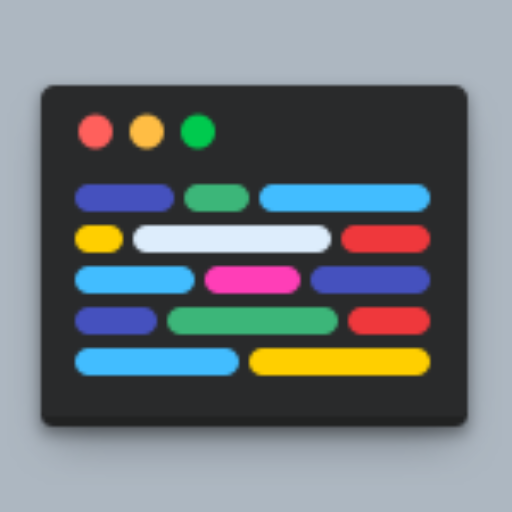Code-AI-powered firmware development assistance.
AI-driven insights for firmware excellence.
How do I optimize this C code for my microcontroller?
Can you explain this assembly language snippet?
What are the best practices for firmware development?
Help me debug this firmware code issue.
Related Tools
Load More
code: python java html react web c+ (copy)
The worlds most powerful coding assistant.

代码助手
协助开发者解决编程中遇到的各种疑难杂症,默认用中文回答

ONLY CODE
A GPT tailored for coders. Default Behavior: Only code. Use preprompts for different behavior.

code explain
explain the code block as comments, please give the code

Code Catalyst
Concise coding assistant for expert software engineers

Take Code Captures
I help you capture, enhance, and share your code with ease
20.0 / 5 (200 votes)
Introduction to Code
Code is designed as a specialized assistant for firmware engineers, providing tailored support in understanding, writing, and debugging firmware code. Its core purpose is to enhance the development experience by offering detailed explanations, best practices, and real-world solutions to common and complex challenges in firmware engineering. Code is well-versed in low-level programming languages like C and assembly, as well as the nuances of hardware-software interaction, memory management, peripheral interfacing, and resource-constrained development environments. The assistant is structured to offer in-depth knowledge that facilitates both learning and productivity, making it a powerful tool for firmware engineers, whether they are beginners or experts. For example, consider a scenario where a developer is facing an issue with memory allocation in an embedded system. Code can explain memory handling strategies, identify potential pitfalls (like buffer overflows or improper stack/heap usage), and suggest improvements based on industry best practices. Another scenario might involve troubleshooting I2C communication, where Code can guide the user through understanding the protocol, writing initialization routines, and debugging common issues with master-slave communication.

Key Functions of Code
Code Writing Assistance
Example
Code assists a user in writing an interrupt service routine (ISR) for an ARM Cortex-M microcontroller in C.
Scenario
A firmware engineer needs to write a reliable ISR to handle external interrupts from a GPIO pin. Code provides guidance on writing efficient and safe ISRs, covering key points like minimizing latency, clearing interrupt flags, and ensuring reentrancy. It also offers examples and tips on how to prioritize interrupts and manage critical sections of code.
Debugging and Troubleshooting
Example
A developer is struggling with a bug related to UART communication on an STM32 microcontroller.
Scenario
The UART peripheral is failing to send or receive data correctly, and the developer cannot identify the cause. Code helps by explaining how to systematically debug UART issues—suggesting checks for baud rate mismatches, frame errors, and proper use of interrupt-driven communication. Code also demonstrates how to use debug tools like logic analyzers or serial monitors for troubleshooting.
Optimization and Best Practices
Example
An engineer is trying to optimize power consumption on a battery-powered device using a PIC microcontroller.
Scenario
The developer needs to reduce the system’s power draw during sleep mode. Code provides tips on how to configure low-power modes, optimize wake-up routines, and manage power-hungry peripherals. It also offers insights on using sleep and idle states, clock gating, and dynamic power management techniques to extend battery life without sacrificing performance.
Target User Groups for Code
Firmware Engineers (Beginners to Experts)
Firmware engineers, whether they are new to embedded systems or experienced professionals, can benefit from Code's guidance in low-level programming and hardware interfacing. Beginners can use Code to learn and understand core firmware concepts, such as peripheral drivers, RTOS integration, and memory management. Experienced engineers can leverage Code's troubleshooting capabilities to debug complex issues or optimize performance and power consumption.
Embedded System Designers and Developers
Embedded system designers who work closely with hardware and firmware development will find Code useful when dealing with hardware-software integration. Whether they are working on designing new hardware or adapting firmware for custom boards, Code offers guidance on interfacing with sensors, actuators, and communication modules. This group benefits from insights into peripheral setup, efficient resource management, and firmware testing strategies.

How to Use Code
Step 1
Visit aichatonline.org for a free trial without login, no need for ChatGPT Plus.
Step 2
Select the 'Code' GPT from the list of available tools or categories. Ensure you have a clear understanding of the task you want assistance with, whether it's firmware development, troubleshooting, or learning best practices.
Step 3
Prepare your firmware-related questions or coding issues. Input your queries in as much detail as possible to get comprehensive and accurate responses.
Step 4
Review the generated answers or explanations. Apply the guidance provided to your firmware development or troubleshooting tasks, and feel free to iterate by asking follow-up questions.
Step 5
Explore additional features such as detailed code reviews, debugging assistance, or educational explanations to deepen your understanding and enhance your firmware engineering skills.
Try other advanced and practical GPTs
Math Mentor
AI-powered Math Learning Companion

Economics + Math 📊
AI-powered insights for economics and math

Academic Research Notes in APA 7 from PDFs - v2.0
AI-powered annotated bibliographies made easy

Chinese Academic Research Assistant
AI-powered assistant for academic excellence.

Written by AI Spot Check
AI-powered text verification tool

Story AUTHORity Creator
Transform your story into success.

Specific Writing Helper - CE 101
Enhance writing precision with AI assistance.

Lingo Pro Work Specific
AI-powered language expertise for business.

Smooth Talk - AI Wingman
AI-powered responses for online dating success

AI Web Search Engine
AI-Powered Research Assistance
SEO Manager Pro
AI-driven SEO, Simplified.

Finance Tutor
AI-powered finance learning made easy.

- Troubleshooting
- Code Optimization
- Embedded Systems
- Educational Guidance
- Firmware Development
Comprehensive Q&A about Code
How can Code help me with firmware development?
Code offers expert guidance on writing, debugging, and optimizing firmware code. It can assist in understanding C and assembly languages, provide best practices, and help troubleshoot complex issues in embedded systems, making it easier to develop robust firmware solutions.
Is Code suitable for beginners in firmware engineering?
Yes, Code is designed to cater to all skill levels. It offers clear explanations, step-by-step guidance, and educational content that helps beginners grasp fundamental concepts while also providing advanced tips and troubleshooting for experienced engineers.
What programming languages does Code support?
Code primarily supports firmware development in C and assembly language. It can offer insights, code reviews, and debugging advice specific to these languages, ensuring optimal and efficient firmware solutions for embedded systems.
Can Code assist with real-time debugging of my firmware code?
While Code doesn't execute or test firmware code directly, it can guide you through the debugging process by analyzing code snippets, identifying potential issues, and suggesting solutions based on your input. This helps you resolve bugs efficiently in real-world applications.
Does Code offer any tips for optimizing firmware performance?
Yes, Code provides in-depth suggestions for improving firmware performance. This includes techniques for reducing memory usage, optimizing execution speed, and enhancing code efficiency, ensuring your firmware runs effectively on resource-constrained devices.